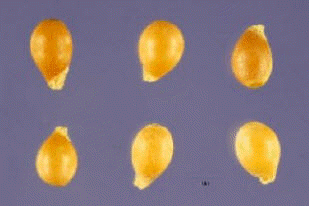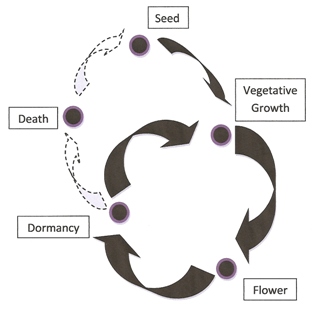 Reproduction
Reproduction
Keeping the family going
The Sweet Violet is full of nectar. Since the flowers open so early in
the spring, when the weather is cold, there are no bees for pollination.
For this reason Sweet Violets are rarely pollinated.

One way the Sweet Violet reproduces is to send out runners from the roots
and form new plants.
Another
way for reproduction is seed dispersal. The seeds of the Sweet Violet are
carried
by
Formica polyctena
ants.
These ants help disperse the seeds to different regions.
The Sweet Violet
is a large-seeded obligate myrmecochore which means that is has large seeds
and
relies on
Formica polyctena ants
to disperse them. To the right is
an example of the Formica
polyctena
ant and below is seeds of the Sweet Violet.
The Sweet Violet is an angiosperm, which means it undergos a
process called double fertilization.
Double
 fertilization is when one sperm nucleus of the plant fuses with the egg
nucleus to form an embryo and the other sperm nucleus fuses with polar
nuclei to form endosperm. Click
on the flower to see an animation that really helps explain double
fertilization.
The Sweet Violet is classified
as a
fertilization is when one sperm nucleus of the plant fuses with the egg
nucleus to form an embryo and the other sperm nucleus fuses with polar
nuclei to form endosperm. Click
on the flower to see an animation that really helps explain double
fertilization.
The Sweet Violet is classified
as a perennial which means it lives for several years.
In its first growing season it only has leaves
and no flowers.
In the spring/summer of each additional season the plant flowers
and sets seed. In the winter the Sweet Violet is dormant and stores its energy in its roots.
While the parts aboveground are dying off, the buds for the next
year’s flowers, leaves and stem are forming on the roots. To learn
more about how the Sweet Violet gets nutrients
see How I am nourished?. Below describes the typical life cycle of a perennial.
perennial which means it lives for several years.
In its first growing season it only has leaves
and no flowers.
In the spring/summer of each additional season the plant flowers
and sets seed. In the winter the Sweet Violet is dormant and stores its energy in its roots.
While the parts aboveground are dying off, the buds for the next
year’s flowers, leaves and stem are forming on the roots. To learn
more about how the Sweet Violet gets nutrients
see How I am nourished?. Below describes the typical life cycle of a perennial.

